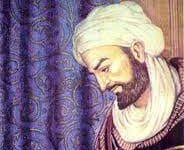Harivamsa-A Review
Harivamsa-A Review
Harivamsa’-A Review
Introduction:
The ‘Harivamsa’ is an ancient Sanskrit epic that holds a significant place within Hindu literature. As an extension of the Mahabharata, it offers a continuation of the great Indian epic by delving into the genealogy and exploits of the Yadava dynasty, particularly focusing on Lord Krishna. Comprising over 16,000 verses, this text provides a detailed and intricate portrayal of various events, characters, and themes from Indian mythology.
Historical Context:
The ‘Harivamsa’ is believed to have been composed between 300 BCE and 300 CE, although precise dating remains a topic of scholarly debate. It’s considered to be a supplementary work to the Mahabharata, providing a genealogical link between the events of the Mahabharata and the stories of Krishna’s life. The ‘Harivamsa’ fills in gaps left by the Mahabharata and offers deeper insights into the lives of key characters like Krishna, Balarama, and Satyabhama.
Themes and Content:
Genealogy and Lineage: The ‘Harivamsa’ elucidates the lineage of Krishna, tracing his ancestry back to the lunar dynasty through Yadu. This genealogical focus reflects the importance of preserving one’s lineage and heritage in ancient Indian society.
Krishna’s Exploits: The text narrates various exploits of Krishna, starting from his early life in Vrindavan to his role in the Kurukshetra War. These stories include his playful interactions with gopis (cowherd girls), his victory over demons like Kamsa and Jarasandha, and his pivotal role in the Mahabharata war.
Theological Reflections: The ‘Harivamsa’ explores theological aspects of Krishna’s divinity and his role as an avatar of Lord Vishnu. It delves into his divine actions, teachings, and the embodiment of righteousness (dharma) on Earth.
Devotion and Bhakti: Devotion (bhakti) to Krishna is a central theme. The text underscores the significance of surrendering to Krishna’s divine will and cultivating a deep, personal relationship with the divine through love and devotion.
Dharma and Virtue: The epic emphasizes the concept of dharma (righteousness) through Krishna’s actions and teachings. It showcases the complexities of adhering to dharma in various situations, highlighting the moral dilemmas faced by characters.
Symbolism and Allegory: The ‘Harivamsa’ often employs allegorical elements and symbolism to convey profound spiritual and moral messages. The stories are often multi-layered and carry deeper meanings beyond their surface narrative.
Literary Style:
Language and Versification: Written in classical Sanskrit, the ‘Harivamsa’ exhibits a rich and complex vocabulary, showcasing the literary prowess of its authors. The verses follow different meters, contributing to the text’s rhythmic and aesthetic appeal.
Narrative Structure: The narrative structure of the ‘Harivamsa’ is characterized by its episodic nature, with stories unfolding in a sequential manner. The text weaves together diverse narratives, combining mythological events with human emotions and philosophical reflections.
Significance:
Spiritual Guidance: The ‘Harivamsa’ offers spiritual guidance by illustrating the principles of dharma, devotion, and virtue through the life and actions of Lord Krishna.
Cultural Insight: The epic provides a window into the cultural and societal norms of ancient India, shedding light on customs, rituals, and moral values.
Mythological Continuity: As a continuation of the Mahabharata, the ‘Harivamsa’ contributes to the continuity of the epic tradition, preserving and expanding upon the mythology of Krishna.
Critique:
Complexity: The intricate and multi-layered narratives might pose challenges for modern readers unfamiliar with Hindu mythology and philosophical concepts.
Redundancy: At times, the ‘Harivamsa’ includes repetitive descriptions and retellings of events, which could potentially lead to reader fatigue.
Conclusion:
The ‘Harivamsa’ serves as a captivating extension of the Mahabharata, delving into the life and legacy of Lord Krishna while exploring themes of lineage, dharma, devotion, and virtue. Through its rich narrative style and profound philosophical insights, this epic continues to be a source of spiritual inspiration, cultural understanding, and literary appreciation in the realm of Sanskrit literature. 0 0 0
Harivamsa-A Review
You May Like: The Satanic Verses by Salman Rushdie-A Review
N. B. The article originally belongs to the book ‘The Reviews of Epic Literature Around the World Vol-I‘ by Menonim Menonimus.











